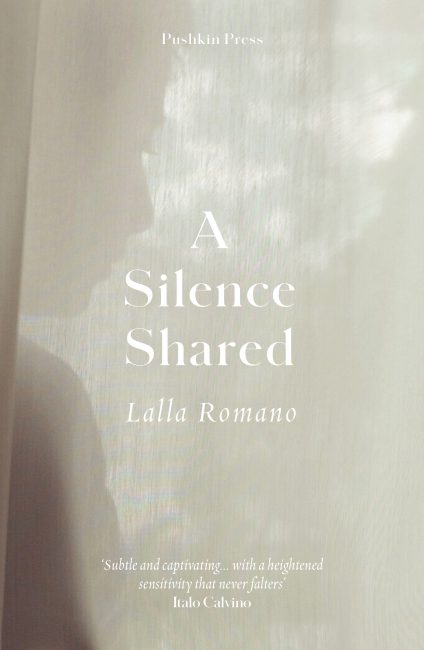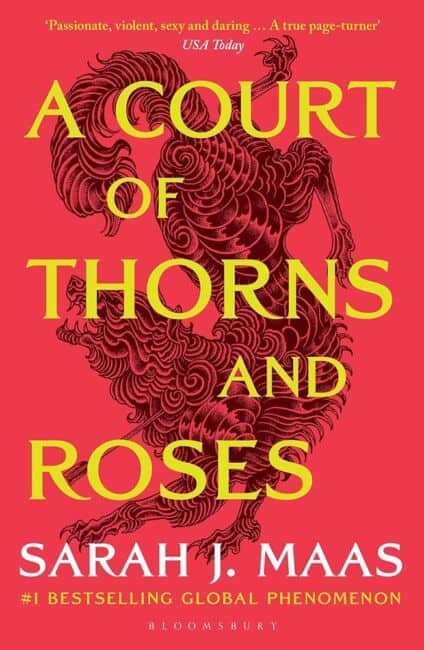A Silence Shared
Lalla Romano
A beautiful and devastating read, A Silence Shared is a book quite unfamiliar to the majority of English readers — and, yet, one that everyone should read. With its themes of loss, war, heartache, identity, and complex, unresolved emotions, Romano’s story works hard to bring great concepts – personal struggle vs national war, conflict vs love, solitude vs collective grief – in close proximity to one another, encouraging interesting comparisons to be drawn.
Tetto Murato, as the book is known in Italian, takes its readers on a poignant journey punctuated by the events of war and resounding with a strong emotional tenor. Using the tense backdrop of the Second World War, the novel tracks the movements and emotional inner life of Giulia, a young woman struggling to settle upon a fixed identity in a world characterised by uncertainty.
Capturing well the to-and-fro of both physical and emotional upheaval, Romano’s writing is incredibly eloquent — but also economical prose, wasting no turn of phrase on fancy.
Her work deserves to be read alongside other titans of 20th-century Italian literature
- The Spectator
Just like most of her prose fiction and poetry, A Silence Shared draws heavily on the events of Romano’s life in an intriguingly autobiographical manner. Revealing as much or as little as readers are able to discern, this novel is narrated in the first person, as if Romano is speaking to us directly.
Published in 1957, a long enough distance away from the Second World War to allow for insightful reflection, this story chronicles the upheaval and torment experienced by those affected by the conflict.
Like the narrator, Giulia, Romano herself retreated from the bustling hub of Turin to the Italian countryside to avoid the bombings and dangers posed by the war. And, again, like Giulia, Romano had to make this move alone. During this move, Romano’s husband, Stefano, had to remain in the city, leaving her only with the company of ‘a classic to translate’, as she puts it economically.
Throughout this novel, readers are encouraged to draw illuminating parallels between Romano herself and her fictional counterpart, filling in gaps, and blurring truth and invention in compelling ways.
I was struck straightaway by the singular force of her taut, meditative, sorrowful writing.
- Jhumpa Lahiri
As the title would suggest, silence and solitude are central to this novel — and this becomes clear when you take a closer look at the intricate details woven throughout its pages. The Italian title, for example, refers to the small, abandoned farmhouse where protagonist Giulia first breaks her solitude and meets the partisan couple, Ada and Paolo, at a turning point in the novel.
Who is Lalla Romano?
‘Lalla’ (short for ‘Graziella’) Romano (1901 – 2001) was an Italian novelist, translator, poet, and visual artist. With a career spanning decades, Romano made a significant contribution to the Italian arts and culture scene in her lifetime.
And, yet, it was only in the 1940s that Romano turned her attention to prose over painting, with her first poetry collection being written in 1941. Her first novel, Maria (1953), is a direct response to the Second World War, during which she returned to her home province of Cuneo and became involved with the resistance.
Perhaps the crowning achievement of her lengthy and rich career, Romano was awarded the Pavese Prize and Strega Prize – an award for Italian fiction – just before her death at the age of 94. However, she won numerous prizes in her time, including Italy’s most prestigious literary prize, the Penna d’Oro, presented by the president in 1979.
Other books by Lalla Romano
If you like the sound of A Silence Shared, and are intrigued by the various mediums and techniques of Romano, why not explore some of her other works?
One of her least well known – yet brilliant – works is her 1944 translation of Trois Contes by Flaubert. A pivotal moment in her career, when she agreed to Cesare Pavese’s request to translate this, she began to make the definitive transition from being a purely visual artist to writing novels — A Silence Shared was the fruit of such a transition.
Additionally, for readers looking to continue enjoying the deep, intriguing undercurrent spanning all of Romano’s work, The Penumbra is a work that must be read. Its significance stems from the fact that, prior to A Silence Shared, this was the only one of Romano’s novels to be accessible – via translation – to English readers. If you’re seeking a quiet, eerie tale of nostalgia and childhood revisited, this is the book for you.
Want to read more?
To discover more fantastic authors and titles, be sure to regularly browse our latest reviews page and, for more bookish discussions, keep up to date with the Victoria Freudenheim blog.

| ISBN | 9781782278207 |
|---|---|
| Pages | 192 |



